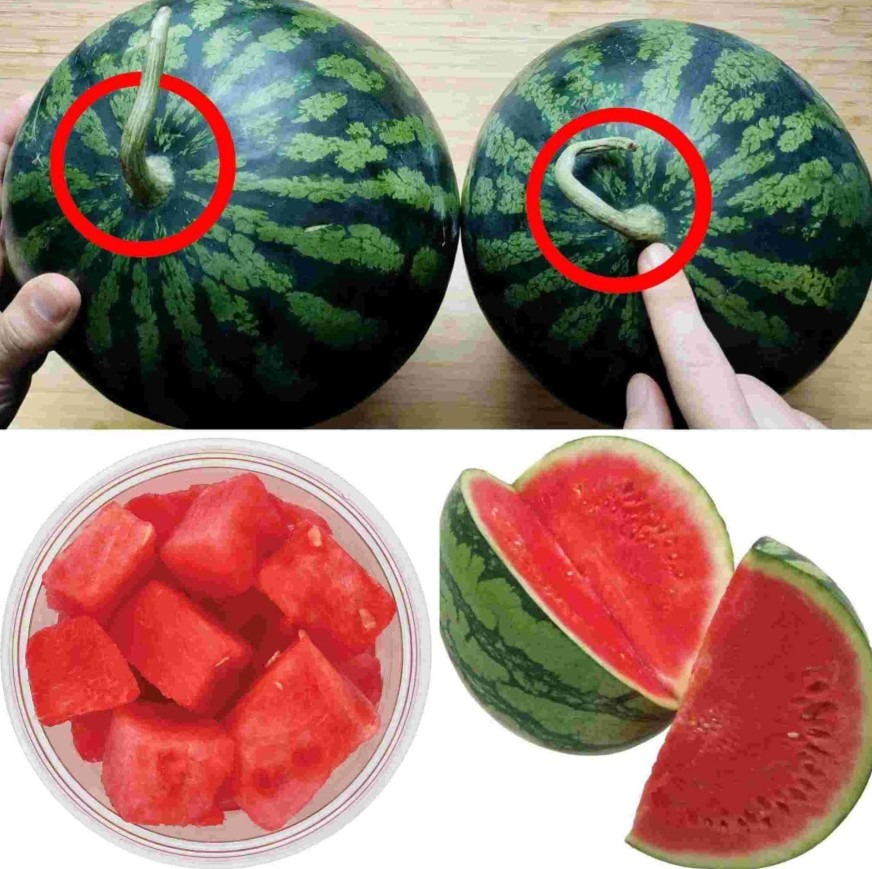Instructions: If the watermelon still has its vine attached, look for the tendril (the curly little vine) near the stem.
Why It Works: A dry, brown tendril is a sign that the watermelon is fully ripe. A green tendril means it was picked too early and likely won’t be as sweet or juicy.
8. Consider the Time of Year:
Instructions: Watermelons are typically in season during the warmer months, from late spring to early fall, depending on where you live.
Why It Works: Watermelon quality is usually best when it’s in season. Out-of-season melons might not be as sweet and flavorful as those picked in peak season.
Serving and Storage Tips:
Serving: Once you’ve selected the perfect watermelon, cut it up and serve it chilled for the best flavor. It’s perfect on its own, in fruit salads, or as a refreshing addition to smoothies.
Storage: If you can’t finish the entire watermelon in one sitting, store the cut pieces in an airtight container in the fridge for up to 3-4 days. Whole watermelons can be kept at room temperature for about a week or in the fridge for longer shelf life.
Variants:
Seedless Watermelons: If you prefer seedless watermelons, they are usually just as sweet as seeded varieties. Be sure to look for them when shopping.
Miniature Watermelons: These smaller watermelons are perfect for a smaller household or if you don’t want to deal with storing leftovers. They are often just as sweet as the larger varieties but are easier to finish in one sitting.
FAQ:
Q: How do I know if a watermelon is overripe?
A: An overripe watermelon may have a very soft or mushy texture, and the field spot may look too dark or brown. When you tap it, the sound may be less hollow, and it might have a sour or fermented smell.
Q: Can I ripen a watermelon after purchasing it?
A: Watermelons do not ripen after they’re picked, so it’s important to select one that is already ripe. If you’ve picked an under-ripe one, the best option is to wait until the next harvest and try again.
Q: Are some watermelon varieties sweeter than others?
A: Yes, some watermelon varieties are naturally sweeter. Varieties like the Crimson Sweet, Sugar Baby, and Moon and Stars are known for their extra sweetness.
Q: How can I cut a watermelon easily?
A: First, cut the watermelon in half lengthwise. Then, slice it into wedges or cubes, and remove the rind with a knife or a melon baller for easier serving.
Conclusion:
Picking the perfect watermelon doesn’t have to be a challenge! By following these tips—looking for the sugar spot, checking the shape, weight, and field spot, and tapping for the right sound—you’ll be able to choose a watermelon that’s as sweet and juicy as it looks. With the warmer months ahead, a perfectly ripe watermelon will be a refreshing addition to your summer meals, whether you’re enjoying it solo or as part of a delicious fruit salad. Happy melon hunting!
see continuation on next page
ADVERTISEMENT

